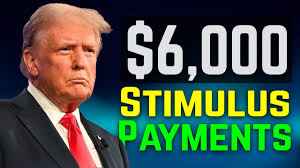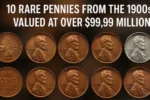Stimulus Check The $6,000 Stimulus Check Program 2025 offers monthly $500 payments to eligible residents in select U.S. states. Designed to provide stable financial support, this initiative helps families manage essential expenses like rent, groceries, and healthcare. Here’s everything you need to know, from eligibility and application to payment schedules and smart usage tips.
What Is the $6,000 Stimulus Check Program?
Unlike the previous federal one-time stimulus checks issued during the pandemic, the 2025 $6,000 stimulus program offers ongoing monthly assistance. Eligible recipients in certain U.S. states receive $500 every month for 12 months, totaling $6,000 per year.
This initiative is part of several state-led guaranteed income programs aiming to provide predictable, long-term financial relief to low- and middle-income households struggling with inflation, rent, utility costs, groceries, and healthcare.
Participating States:
As of now, the following states are either actively running or expanding their monthly payment programs:
-
California
-
Michigan
-
New York
-
New Mexico
-
Washington
Each state has its own set of eligibility rules and timelines, but the core objective remains the same — to support economic stability for residents.
Who Is Eligible?
Eligibility varies slightly by state, but here are the common requirements seen across most programs:
-
U.S. citizens or lawful permanent residents.
-
Must have resided in the participating state for at least 6 months in 2024.
-
Income limit of approximately $65,000 to $80,000 for single filers (limits may be higher for joint filers or families).
-
Must have filed a state income tax return for 2023 or 2024.
-
Must have a valid Social Security Number (SSN) or Individual Taxpayer Identification Number (ITIN).
-
Gig workers, freelancers, and self-employed individuals are eligible with proof of income.
-
Families with young children (under 5) or seniors may be eligible for additional bonus payments.
How to Apply
Applications are handled through official state-specific portals. For example, California residents can apply via the Franchise Tax Board website.
General Application Steps:
-
Verify eligibility based on income, residency, and tax filing.
-
Prepare documents: Tax returns, proof of address, and ID.
-
Provide banking info for direct deposit (recommended for faster payments).
-
Submit application through your state’s online portal.
-
Track application status via email or the state portal.
Deadline: Many states require applications to be submitted by March 31, 2025, but check your state’s timeline as some may close earlier.
Payment Schedule & Amounts
-
Monthly Payments: $500 per month.
-
Child Bonus: Some states (like California) offer $350 per child, up to 2 children.
-
Start Date: Payments begin in early 2025 (some states began as early as July 2024).
-
Payment Method: Direct deposit (preferred) or paper check.
-
Duration: Payments typically continue for 12 months, or until funds are exhausted (March–June 2026 in some cases).
Important Things to Know
-
This is not a federal program. There is no nationwide $6,000 stimulus in 2025.
-
Payments are usually non-taxable and don’t affect benefits like Social Security, SNAP, or housing aid.
-
Once approved, you do not need to reapply each month. Payments will be sent automatically unless your eligibility changes.
-
Watch for scams. Always use official state websites and avoid third-party or suspicious portals.
Smart Ways to Use the Payments
The monthly payments are meant to support essentials. Consider the following tips:
-
Prioritize necessities: Pay rent, utilities, and groceries.
-
Budget wisely: Use a simple monthly budget to make your funds last.
-
Reduce debt: Use extra funds to pay down credit cards or loans.
-
Build an emergency fund for medical bills or sudden expenses.
-
Invest in skills or education to improve long-term financial security.
The $6,000 stimulus check program in 2025 is a major state-led initiative offering monthly $500 support payments to eligible individuals and families. Unlike earlier federal relief efforts, this program delivers predictable, long-term income to help with everyday costs.
If you live in California, Michigan, New York, New Mexico, or Washington, visit your state’s official website to review the specific guidelines and apply as soon as possible.
This ongoing support model not only aids in immediate financial relief but also promotes economic resilience — and could serve as a blueprint for future stimulus programs in the U.S.
Is this a federal stimulus program?
No. This is not a federal program. The $6,000 stimulus is offered by select U.S. states as part of state-level guaranteed income or support initiatives.
Which states are offering the $6,000 stimulus in 2025?
Currently, California, Michigan, New York, New Mexico, and Washington have programs that offer similar benefits. Each state’s rules may vary slightly.
How much will I receive?
Most programs offer $500 per month for 12 months. Some states also offer additional child bonuses (e.g., California: $350 per child for up to 2 children).
When do the payments start?
Payments began in some states in July 2024, but most will start distributing funds in early 2025. Payment schedules vary by state.
Are the payments taxable?
Generally, no. Most states classify these payments as non-taxable, but it’s best to confirm with your state tax board or a tax professional.
Do I have to reapply every month?
No. Once you’re approved, monthly payments continue automatically, provided your eligibility doesn’t change.
Will this affect my other benefits (SNAP, SSI, etc.)?
Typically, no. These payments are separate and usually do not affect other government benefits. However, check with your benefit provider for confirmation.
Where do I apply?
Apply through your state’s official website. For example:
-
California: Franchise Tax Board
-
Michigan: mi.gov
-
New York: ny.gov
-
New Mexico: nm.gov
-
Washington: wa.gov
Can undocumented immigrants apply?
Eligibility depends on the state. Some programs accept applications from individuals with an ITIN instead of an SSN. Check your state’s rules.
What if I miss the deadline?
Most programs require applications by March 31, 2025, but some may close earlier. Apply early to avoid missing out.





